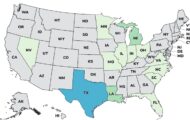Scientists at the University of Florida Emerging Pathogens Institute have released a report that lists the Top Ten most dangerous combinations of foods and disease-causing bacteria.
 The report, called Ranking the Risks: The 10 Pathogen-Food Combinations with the Greatest Burden on Public Health is the first comprehensive report on this issue published in the United States. It’s important that food safety officials and others responsible for the safety of the country’s food supply know about these combinations. More than 70 million Americans contract a foodborne illness every year (one in six people), and 3,000 of those people die.
The report, called Ranking the Risks: The 10 Pathogen-Food Combinations with the Greatest Burden on Public Health is the first comprehensive report on this issue published in the United States. It’s important that food safety officials and others responsible for the safety of the country’s food supply know about these combinations. More than 70 million Americans contract a foodborne illness every year (one in six people), and 3,000 of those people die.
The task of making the food supply safe is overwhelming. But by focusing efforts on these top ten combinations that present the greatest burden, the effort could become more efficient. The top ten pathogens that cause the most illness are:
- Salmonella
- Toxoplasma gondii
- Campylobacter
- Listeria monocytogenes
- Norovirus
- E. coli 0157:H7
- Clostridium perfringens
- Yersinia enterocolitica
- Vibrio vulnificus
- Shigella
When the scientists paired the pathogens with risky foods, these are the top ten combinations that cause the most illness and represent the largest cost burden:
- Campylobacter in Poultry
- Toxoplasma in Pork
- Listeria monocytogenes in Deli Meats
- Salmonella in Poultry
- Listeria in Dairy products
- Salmonella in Complex foods
- Norovirus in Complex foods
- Salmonella in Produce
- Toxoplasma in Beef
- Salmonella in Eggs
There’s an acronym in that report you may not have heard before: QALY. That stands for “Quality Adjusted Life Year” and it’s a term used by doctors to assess the severity of an illness and how that illness affects a person’s life, including the value of treatments for any illness. QALY can range from 1, which is one year of life lived in perfect health, to negative numbers, which can mean an existence that some judge worse than death.
“Complex foods” is an interesting category; those are identified as non-meat factory foods with a host of additives. In other words, any type of processed food that is made up of more than one food, such as a frozen vegetarian lasagna, bottled pasta sauce, or bakery bread.
The report states that 14 foodborne pathogens cost $14 billion a year, equivalent to the loss of 60,000 QALYs. It also points out that FDA-regulated foods cause half of the overall foodborne illnesses in this country every year. Pregnant women and fetuses are especially vulnerable to four of the top ten pathogen-food combinations. And Salmonella causes more disease burden than another other pathogen, with contaminated poultry contributing the largest burden of any food.
The scientists would like to see safety regulators and officials develop a proactive stance to foodborne illness, rather than reacting to a crisis after it happens. The FDA and the USDA should focus on a risk-based, preventive method for protecting the nation’s food supply. And use studies like this one to identify combinations of new bacteria strains and commonly consumed foods before they cause a major outbreak.
Researchers also state that these conclusions are limited by typical uncertainties in the available data. They say that “food attribution data”, or research that defines the “disease triangle” between the biological agent, the food it contaminates, and the person who is infected, needs to be more fully studied, especially for the five top pathogens.




